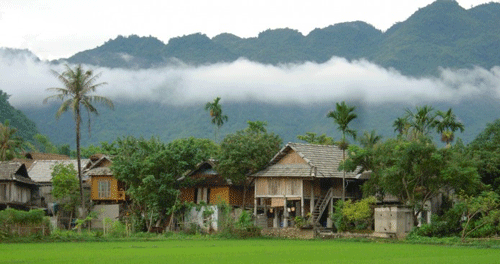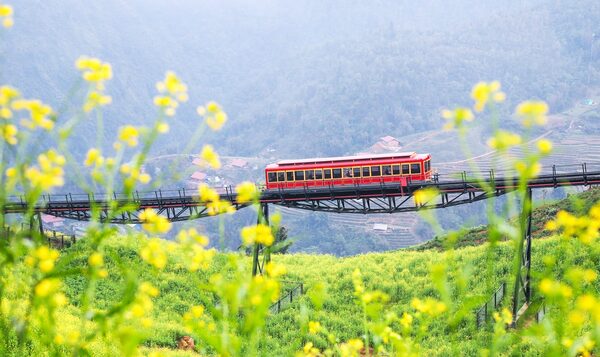An overview of the most outstanding historical sites in Vietnam for Vietnam history tours
The article will give you opportunities to learn more about the unique culture and history all around the country.
More than 4000 years of glorious history have been the pride of the Vietnamese in building and defending the beloved country. With the diversity of national identity, Vietnam has many cultural and historic sites those attract a lot of tourists.
1. Hanoi
Lies on the bank of the Red River, Hanoi is the capital of Vietnam for more than a thousand years. In 1010, Ly Thai To, the first ruler of the Ly Dynasty, moved his capital here and named it Thang Long (City of the Soaring Dragon). The city was occupied by the Imperial Japanese in 1940 and liberated in 1945, when Ho Chi Minh proclaimed the Independence of Vietnam. However, the French reoccupied the city in 1946. Following the end of the Vietnam War, Hanoi became the capital of a reunified Vietnam when North and South Vietnam were reunited on July 2, 1976.
Hanoi’s history is tangible in its atmosphere, as well as its sights. There are a number of interesting places to get by in Hanoi if you are planning for Vietnam history tours.
The Literature Temple
One of the most famous historical sites of the city is Van Mieu – Quoc Tu Giam (The Literature Temple) which was built in 1070 at the time of Emperor Ly Thanh Tong. Not only being the very first University of the nation, Van Mieu is also the place to worship Confucius. The Vietnamese always come here to pray for luck in learning and working by touching the rock tortoises’ head, because it is believed to be very sacred.
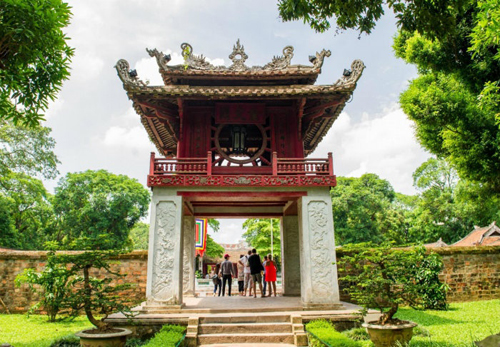
The Literature Temple, Hanoi
National Museum of Vietnamese History
Another must-visit historical site in Hanoi is National Museum of Vietnamese History. Built between 1925 and 1932, it is a magnificent example of Indochinese architecture. The exhibits are all about Vietnam through times, from primitive period to present. The jewellery, tools and household items archaeologists have found paint a lively picture of the people who inhabited the region long ago. Ancient drums and hundreds of antiques of the Dong Son culture, Hindu statuary from the Khmer and Champa kingdoms, relating to the French occupation and the Communist Party are also on display.
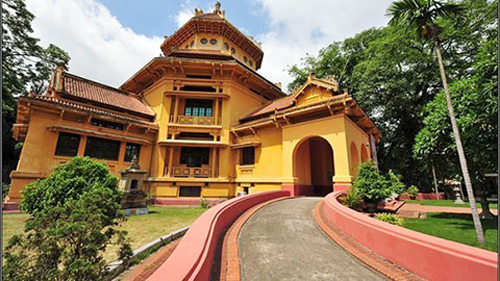
Vietnamese History Museum
Imperial Citadel of Thang Long
Situated at the heart of Hanoi, the Central Sector of the Imperial Citadel of Thang Long is an outstanding place of interest. The site was inscribed on the World Heritage List by UNESCO’s World Heritage Committee in 2010. There’re two sections: the archaeological site at 18 Hoang Dieu Street and the central axis of the Nguyen Dynasty’s Citadel of Hanoi, which include the Flag Tower, the South Gate , the Kinh Thien Palace Foundation, the Princess’s Pagoda, and the North Gate. This was the most important sector of Thang Long Citadel, the capital of Dai Viet under the Ly, Tran, and Le dynasties from the 11th to the 18th centuries. It was also the headquarters of the North Vietnamese government and army during the Vietnam War (from 1954 and 1975). This site is in our many Vietnam history tours
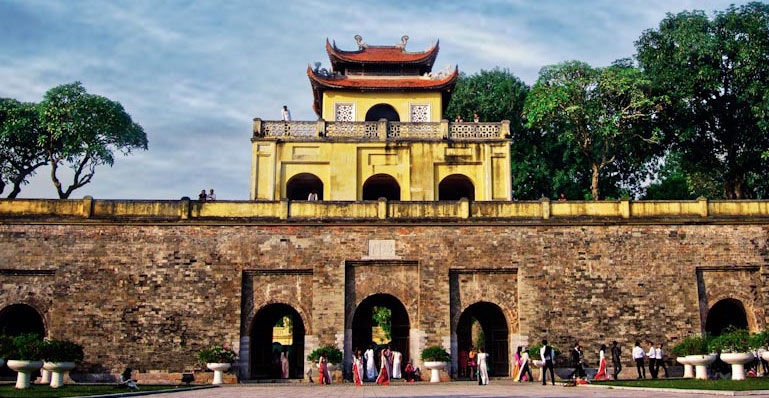
Thang Long Imperial Citadel
Ho Chi Minh Mausoleum
Ho Chi Minh Mausoleum is an important historical attraction of Hanoi, known for honoring the national hero: President Ho Chi Minh. The building is where visitors can express their admiration and gratitude towards the common father/uncle of Vietnamese who has led the country to independence and reunification. It is popularly known among Vietnamese as Uncles’ Mausoleum, for the intimate and familiar atmosphere Ho Chi Minh always created when he was alive. Built over 2 years from 1973 to 1975, the Mausoleum is also a lively illustrator of national unity.
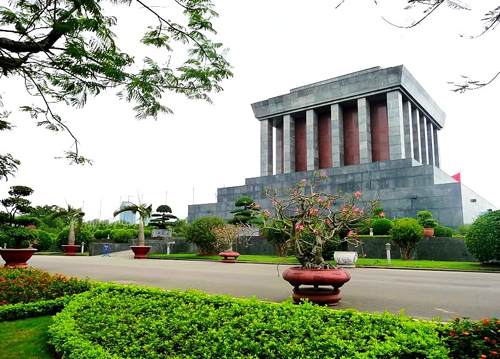
Ho Chi Minh Mausoleum, Hanoi
French-colonial architectures
Long Bien bridge
While taking control over Vietnam, the French built infrastructure in Vietnam such as the Saigon to Hanoi railway. They also built roads and bridges such as Long Bien bridge- one of the most outstanding historical sites in Vietnam.
Though the Long Bien Bridge was designed by French, it was built directly by Vietnamese workers. More than 100 years with decades of war, Long Bien Bridge was bombed many times by air attacks by American army in 1967, 1972; and many spans of the bridge were destroyed. The left spans still remaining today remind us of an unforgettable past. The bridge is not only a traffic construction, a nice architecture, but also a living historical relic.
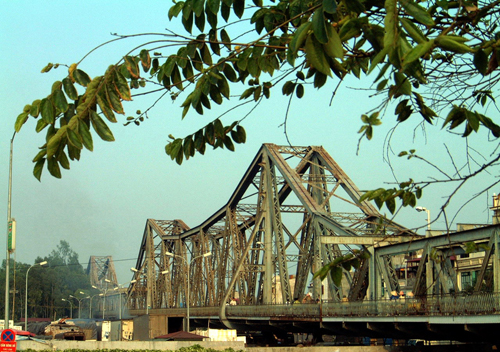
Long Bien bridge, Hanoi
Hanoi Opera House
Another famous cultural sites of Hanoi that was constructed by the French is Hanoi Opera House. Built in 1911, it is considered to be one of the architectural landmarks of Hanoi. Located in the centre of Hanoi, near Hoan Kiem Lake, Hanoi Opera House proudly stands as one of the most famous architectural, cultural and political symbols of Vietnam.
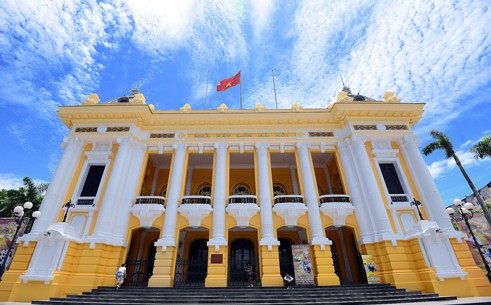
Hanoi Opera House
2. Ha Long
Dau Go Cave
Visiting Dau Go Cave in Ha Long, tourists not only have chances to experience the breath-taking view of Vietnam’s most beautiful cave, but also can learn more about Vietnam’s history, especially The Battle of Bạch Đằng in 1258. It was one of the greatest victories in Vietnamese military history, commanded by Supreme Commander Tran Hung Dao against the invading army of the Yuan dynasty- the ruling dynasty of China and Mongolia. The cave derives its name from the role it played during the Battle of Bach Dang, when wooden stakes were hidden during high tides so that the Mongol could not see it. Then, they were transferred to Bach Dang River to create a trap to destroy the enemy’s ships. This cave is definitely a must-visit destination in Vietnam.
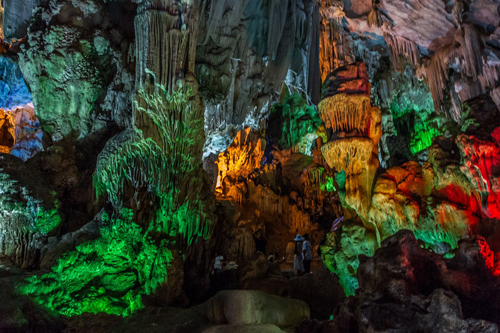
Dau Go Cave, Halong
3. Ninh Binh
Hoa Lu Ancient Capital
Hoa Lu Ancient Capital is the tourist destination which will bring you to a few imperial capitals of the country in the ancient eras. It was the country’s capital under Dinh Emperor, after the country’s first major civil war- twelve independent feudal warlords for control of the country. Dinh Bo Linh reunified the country under the name of Dai Co Viet. He seized power and founded a new kingdom’s capital for 41 years: Hoa Lu.
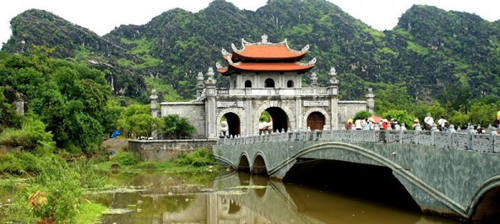
Hoa Lu temple
4. Phu Tho
Hung temple
About 80 km northwest of Hanoi, Hung temple is a complex of majestic historical architecture. The temple is dedicated to the Hung kings, founder of the Van Lang State, the first State in the history of Vietnam. In 7th century BC, it was said that 18 Hung Kings ruled the country. People still worship Hung King as a founder of the nation still today. If you are planning a Vietnam travel package on this occasion, don’t forget to visit Hung Temple on Nghia Linh Mountain in Phong Chau District, Phu Tho Province, which is considered the most sacred of the historic sites by the Vietnamese.
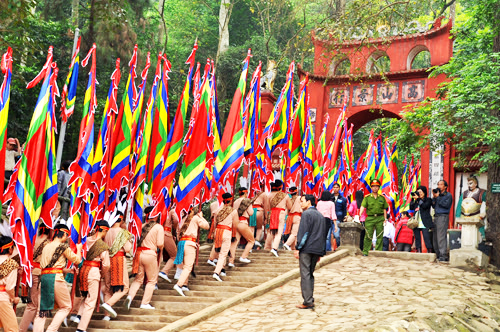
Hung Kings temple festival
5. Dien Bien
Dien Bien Phu is a city in the northwestern region of Vietnam. It is the capital of Dien Bien Province. The city is best known for one of the most important events which occurred there during the First Indochina War, the Battle of Dien Bien Phu. Fighting a guerrilla war against the French in eight years, in 1954, the Viet Minh surrounded French army at Dien Bien Phu. After a siege lasting 57 days the French were forced to surrender. General Vo Nguyen Giap- the leader of the Battle – is considered one of the greatest military strategists of the 20th century. The battle of Dien Bien Phu is a painful symbol to French army, and became a star role in Vietnam’s modern history.
The town Dien Bien Phu sits in the heart-shaped Muong Thanh Valley, surrounded by heavily forested hills. The scenery along the way here is stunning with approach roads scything through thick forests and steep terrain. Dien Bien Phu is not only a beautiful landscape to visit, but also a living historical relic that witnessed Vietnamese’s courage and great patriotism.
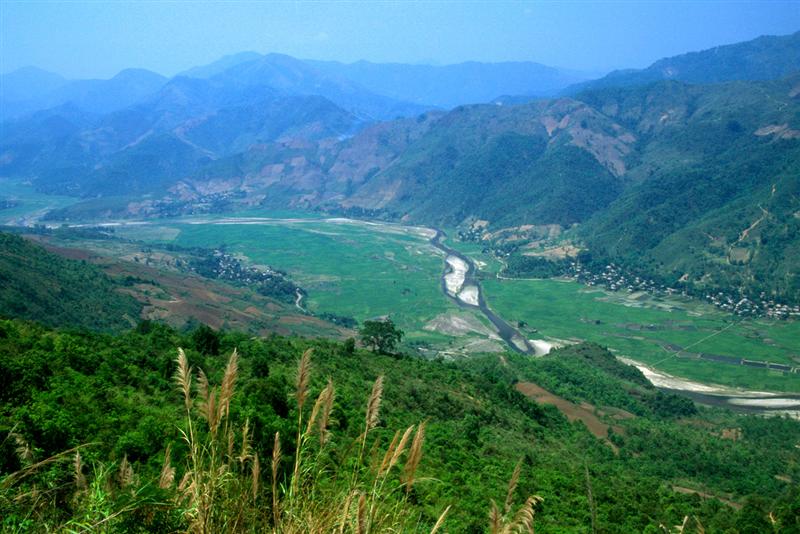
Dien Bien Phu valley
6. Thanh Hoa
Do mountain
Thanh Hoa is one of the biggest provinces in Vietnam and a cradle of Vietnamese civilization dating back hundreds of years ago. According to archeologists, based on the vestiges of human habitation found in Do moutain in Thanh Hoa, it is said that the primitive period of Vietnam was about 500,000 years ago. They just lived on gathering fruits, vegetables and used some pebble implements for hunting.
Lam Kinh Temple
Another important historical site in Thanh Hoa is Lam Kinh temple, located in Xuan Lam Commune, Tho Xuan District. Here, tourists have a chance to visit a well-known historic relic related to the life and career of King Le Thai To, a famous king in Vietnamese history, as well as learn about the uprising of the Lam Son troops in the 15th century.
After ten years of leading the Lam Son uprising to fight against the Northern invaders, Le Loi won and became a king in 1428 with the official name of Le Thai To. He built an imperial city, called it Lam Kinh. It includes magnificent buildings like a palace, a southern gate, an imperial temple and a dragon yard.
Visiting the relics on August 22, tourists not only have chance to enjoy a beautiful landscape and learn about the culture and history, but also can participate in the Lam Kinh Festival with many traditional folk games.
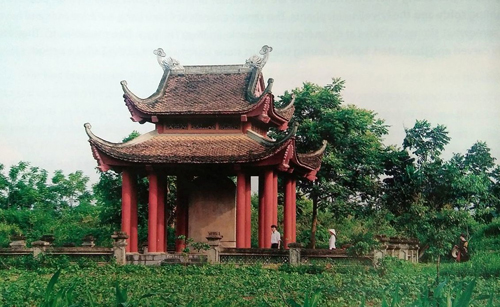
Lam Kinh Temple
7. Quang Tri
Quang Tri is a beautiful landscape with many historical sites. In 1954, when Vietnam was divided pending general elections, the 17th Parallel (Vietnamese Demilitarized Zone) in Quang Tri would act as the temporary border of the northern part and the southern part of Vietnam. It became important as the battleground demarcation separating North Vietnamese territory from South Vietnamese territory.
Hien Luong Bridge on Ben Hai River is one of the most famous historical sites that located in 17th Parallel. The bridge is is 178 m long, witness to the Vietnamese people’s fierce but glorious struggle and a reflection of their desire for and belief in victory. It took 21 years later for Vietnamese people from the north and the south to be united. These days, people on both sides of Ben Hai River are jubilantly celebrating National Reunification Day.
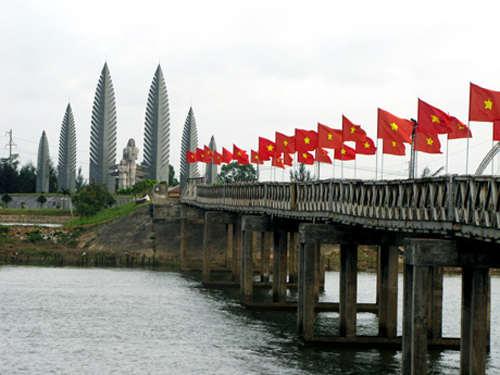
Hien Luong Bridge
8. Hue
Hue, located on the banks of the Huong River (the Perfume River), is often referred to as the “Imperial City”. It was the political, the cultural and religious centre under the Nguyen Dynasty, the last royal dynasty of Vietnamese history. It is best known for the palace within the citadel, which is the Complex of Hue Monuments – a UNESCO World Heritage Site. The rich architectural details, the elegant landscape features and the historical importance make it one of the most beautiful and interesting site to visit.
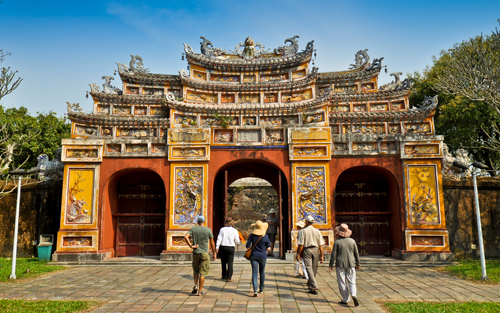
Hue Imperial City
9. Binh Dinh
Binh Dinh province is not only known as the land of Vietnamese traditional martial arts but also the birthplace of King Quang Trung, leader of the Tay Son uprising at the end the 18th century.
King Quang Trung and his brothers, together known as the Tay Son brothers, were the leaders of the famous Tay Son rebellion. He was also one of the most successful military commanders in Vietnam’s history, played key figure in defeating both Nguyen Lord in the south and Trinh Lord in the north, helped ending a hundred-year-long division of Dai Viet.
In Binh Dinh, people built Quang Trung Museum as a dedication to this national hero. It is one of the largest and busiest place attracting many reseachers. More than a historical site, the Quang Trung Museum is a tourist attraction in Binh Dinh province. This is a must-see for anyone wishing to learn about the glorious past, the courage and the indomitable spirit of the Vietnamese people.
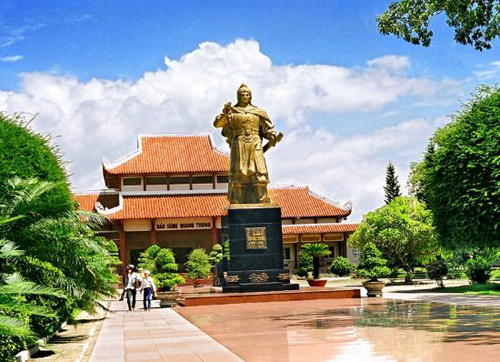
Quang Trung museum
10. Ho Chi Minh city
Located in south of Vietnam, Ho Chi Minh City (formerly Saigon) is the largest city in Vietnam. From 1954, during Vietnam war, Saigon was the capital of Republic of Vietnam until the country unification with in 1975. It was renamed Ho Chi Minh City in honor of the pen name of the Vietnamese greatest leader of all time – Ho Chi Minh.
This city has many important monuments with the rich history attached with beautiful destinations, which make it definitely be the top must-visit place in Vietnam. Ones of the most famous historical sites that tourists and researchers can learn much about Vietnam’s glorious history is Cu Chi Tunnel, The Independence Palace…
Cu Chi tunnels in Vietnam history tours
Cu Chi Tunnels have become a popular tourist attraction. During the Vietnam war, it served a key role during combat operations, including as a base for Communist attacks against nearby Saigon region. It tells a fascinating and legendary tale of courage of Vietnamese soldiers, despite all the struggles they have to endure in such a long time.
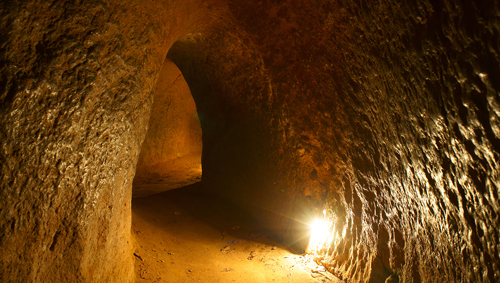
Cu Chi tunnels
The Independence Palace
Independence Palace built on the site of the former Norodom Palace, is a famous landmark in Ho Chi Minh City. It is known as the famous historical witness that passed through the fierce wars against the French and American colonists.
Following the end of the American War, it was designated a historical and cultural relic. In 2009, the Vietnamese government recognized the structure as a special national monument. Like Long Bien Bridge in Hanoi, The Independence Palace has stayed in the mind of many generations of Vietnamese people not only for its unique and beautiful structure, but also for its sacred meanings.
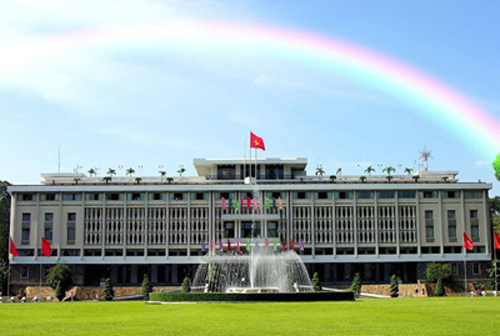
The Independence Palace, Saigon









